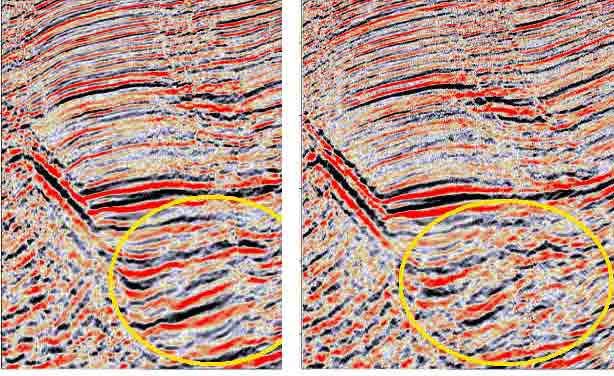Offshore Sri Lanka Reimaging
13,080 km of broadband 2D seismic data
Use broadband 2D seismic data to enhance prospectivity of frontier basins and plays offshore Sri Lanka.

PS Kirchhoff PSTM uses smoothed physical interval parameters for Vnmo(P), Vp/Vs(vert) and Vvert(S). This has the advantage of dealing with more geophysically meaningful parameters with direct links to borehole measurements. Therefore, all parameters can be directly compared or constrained to information from wells or walkaway VSPs. Our model building and migration tools are based on a workflow using the vertical S-velocity instead of the more common method of using a nonphysical converted-wave velocity.
Because rays used for wide-offset PSTM often travel horizontally, accurate treatment of ray bending and anisotropy is critical. The asymmetric PS operator is designed using full curved-ray, anisotropic ray tracing based on the two separate but consistent P-wave and S-wave geological models.
PS Kirchhoff PSDM is used for more complex structural challenges, along with a tomographic velocity model building approach. Our implementation utilizes a four-parameter anisotropic velocity model and employs full 3D anisotropic ray tracing to handle any lateral velocity variations. Again, borehole information (in the form of well logs, check shots, and VSPs) provides geological constraints.
The use of prestack depth migrations and a common velocity model ensures that both PP and PS data are tied in depth. Thus, final image volumes are ready for multicomponent interpretation, event registration, and joint PP-PS inversion.
